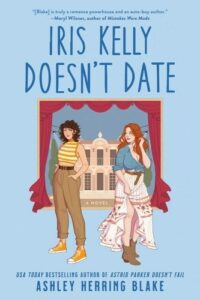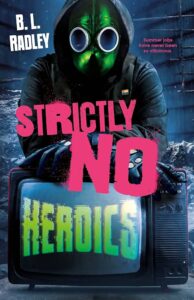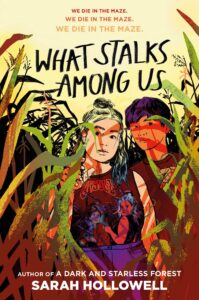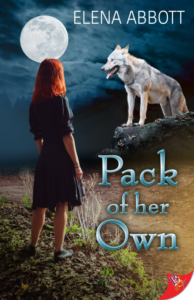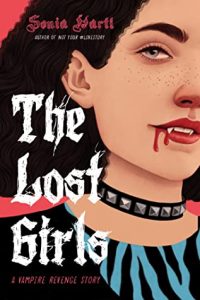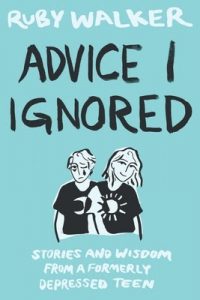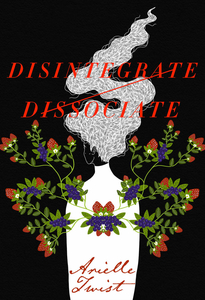Buy this from Bookshop.org with a Lesbrary affiliate link!
First, a confession: I never liked romance novel covers. For the first thirty-five years of my reading life, I had no idea what went on between the covers of romance novels (well, okay, I had some idea), but if it had anything to do with what was on the cover—hard pass. Now, I am aware that some genre purists detest the illustrated cover trend, and I get that. For how many readers, though, has the illustrated cover been a gateway drug to the romance novel? It was for me. And that brings us to Delilah Green, the town of Bright Falls, and their creator, Ashley Herring Blake.
From the very first chapter of Delilah Green Doesn’t Care (2022), I wanted to spend as much time as possible with Delilah Green, Claire Sutherland, Iris Kelly, Astrid Parker, and anyone else to whom Blake would introduce me. Yes, even Astrid—who, by the way, gives off such extreme Lemon Breeland vibes that I’ve since had to go back and rewatch a few episodes of Hart of Dixie. Blake balances the sibling tension between Delilah and Astrid with the main romance plot between Delilah and Claire, all the while developing the setting of Bright Falls, Oregon. Another confession: I have been trying to escape from coastal Georgia for a while now, hoping to end up in Oregon. If the Bright Falls that Blake wrote about was real, I would have moved there immediately. Delilah needs a GenX friend who can go toe-to-toe with her sarcasm and eyerolls, right?
Imagine my surprise when I discovered what was waiting for me in the sequel, Astrid Parker Doesn’t Fail (2022). Blake introduces her readers to a new character, Jordan Everwood, who has arrived from—yes, serendipity and irony are real things, folks—coastal Georgia. (It is less surprising if you know that Herring lives in coastal Georgia. But no less serendipitous.) After a crushing breakup that challenged her sense of self, Jordan finds herself an unlikely match for Astrid. Astrid learns to loosen up (sort of), and everyone in Bright Falls is happy. Almost everyone. Something truly unfortunate happens to Iris Kelly in Astrid Parker, which serves as the setup for the third Bright Falls novel.
Oh, and the plot of Astrid Parker revolves around an HGTV-esque renovation reality show. If that sort of thing matters to you.
Blake is not the first person to create a charming small town in which romance and hijinks occur. I know I said that I didn’t know what went on within the pages of romance novels, but I’ve seen Hart of Dixie, remember? For what it’s worth, though, I’d take Bright Falls over Bluebell, Virgin River, or even Stars Hollow (yes, Stars Hollow) any day. The best feature of Blake’s Bright Falls series is the way that she examines the trauma that her characters have had to face. Whether it’s the death of a parent, an overbearing mother, a devastating breakup, or a bad reputation, Blake takes her readers through what it means to be wounded by life and by the people in it. Trauma doesn’t just “scar” us; it lives on, at least until it is dealt with. Nothing, and I mean nothing—not even the illustrated covers—gets me more in a romance novel than one character telling another that their trauma is real and then helping them deal with it.
Iris Kelly doesn’t date because anyone she dates will inevitably let her down. Blake provides us with a catastrophic example of this maxim in Astrid Parker. When we meet up with Iris at the beginning of Iris Kelly Doesn’t Date (2023), she’s done with it all: cheaters and liars, people who think being bisexual means being greedy or hypersexual, and people who are convinced that Iris does not have her life priorities straight. And that is how Iris ends up at Lush, a club in Portland, where she spots her next one-night stand. All is going to plan until the stranger responds to Iris’s seduction technique by vomiting all over her.
I wonder sometimes if there are people out there who are as forgiving as the characters in romance novels. I’m sure there are, but I have no interest in the world of people who are securely attached. Another thing I’ve learned about what goes on between the covers of romance novels: no one seems to have a secure attachment style. And I am here for it. Because the fantasy (or heightened reality) of people helping each other process their traumas while finding love is one I can wholeheartedly support.
I almost didn’t write this review because, as I suspected, it was too easy to discuss what has resonated with me in the Bright Falls series rather than actually review Iris Kelly Doesn’t Date. I would argue, though, that those are not two separate things. I felt a lot of sympathy for Iris, but Stevie’s anxiety is something that I have actually felt. (Not in the way that she felt it during her first interaction with Iris, I should clarify.) Stevie is a fawner who is still friends with her ex. She also lets people tell her what she thinks (or should think), and she struggles with who she is on multiple levels. I am much more interested in those issues than I am with the fake dating plot of the novel. As far as fake dating plots go, this one’s pretty good—it involves an extremely queer production of Much Ado about Nothing.
If that sort of thing matters to you.
What I am going to remember about the Bright Falls series is thinking about how it must have felt for Delilah, Jordan, and Stevie to (re)discover a magical place that is a thousand times better than Narnia. (There is a White Witch—it’s Astrid. And Delilah and Iris have some fierce manes. Also, Astrid makes a caramel dark chocolate seven-layer cake, so those Narnia kids can just keep their Turkish Delight to themselves.) I don’t want to leave Bright Falls, and Iris Kelly Doesn’t Date certainly lives up to the first two novels in the series. As a standalone novel, Iris Kelly would still merit a solid four stars. The Bright Falls series, however, is greater than the sum of its parts. Five stars for six people who I would be glad to know in real life.
If I have to, though, I’ll settle for Delilah Green cameos in every single one of Blake’s future novels.
Content warning: manipulation, panic attacks
Liv (she/her) is a trans woman, a professor of English, and a reluctant Southerner. Described (charitably) as passionate and strong-willed, she loves to talk (and talk) about popular culture, queer theory, utopias, time travel, and any other topic that she has magpied over the years. You can find her on storygraph and letterboxd @livvalentine.

